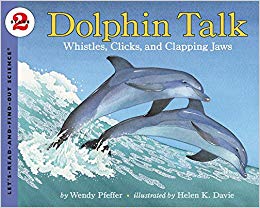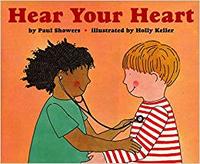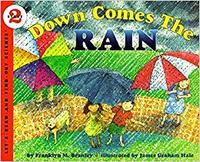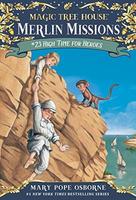Dolphin Talk: Whistles, Clicks, And Clapping Jaws
分級讀本/橋梁書
Dolphin Talk: Whistles, Clicks, And Clapping Jaws
970L
書籍資訊
| 適讀年齡 | 4 - 8 |
| 適合年級 | K - 2 |
| 字數 | 778 字 |
| Grade level equivalent | |
| AR level | 4.9 |
| F&p/guided reading level | |
| Lexile | 970L |
| DRA level | |
| 出版社 | HarperCollins |
| 出版日期 | September 2003 |
Describes how dolphins communicate with each other in squeaks, whistles, and pops. A Level 2 Let's-Read-And-Find-Out Science book.
同系列的其他書籍
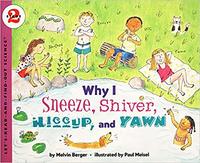
Why I Sneeze, Shiver, Hiccup, & Yawn
Ka-choo! Brrr. Yawnnnn.Have you ever wondered what makes you sneeze when you're in a dusty room? Or shiver when you get out of the bathtub? Or yawn when you're tired? All of these actions are reflexes. Your body makes them happen even though you don't tell it to.Budding young scientists will be amazed as Melvin Berger and Paul Meisel reveal the mysteries behind the reflexes that happen in our bodies every day and offer fun-filled experiments to try on family and friends. Let's Read and Find Out Science, Stage 2.
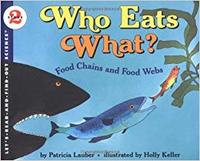
Who Eats What? Food Chains and Food Webs
Informative and intriguing, this science book teaches children to think about the complex and interdependent web of life on Earth. Every link in a food chain is important because each living thing depends on others for survival, no matter how big or how small. Lively drawings from Holly Keller illustrate the clear, simple text by Patricia Lauber. This is a Stage 2 Let's-Read-and-Find-Out, which means the book explores more challenging concepts for children in the primary grades. Let's-Read-And-Find-Out is the winner of the American Association for the Advancement of Science/Subaru Science Books & Films Prize for Outstanding Science Series. Supports the Common Core Learning Standards and Next Generation Science Standards
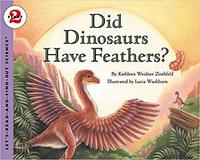
Did Dinosaurs Have Feathers?
Did Dinosaurs Have Feathers? Birds have feathers, but did you know some dinosaurs did too? New fossils have shown that as long as 145 million years ago, some dinosaurs had feathers, just as birds do. The birds you see outside your window are relatives of these ancient creatures. Ages 5-9
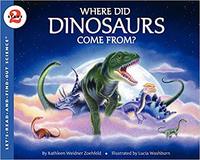
Where Did Dinosaurs Come From?
Stegosaurus had spikes along its back. Triceratops had long, sharp horns. Tyrannosaurus rex was enormous. Millions and millions of years before the first people lived, these fascinating creatures ruled the Earth. To find out where they came from, you have to look way back in time . . . 3.5 billion years ago! Come explore the biggest mystery of all: Where did dinosaurs come from? Read and find out!

Energy Makes Things Happen
This Stage 2 Let's-Read-And-Find-Out Science title clearly explains the different forms of energy and how it is transferred among people, machines, and the natural world.
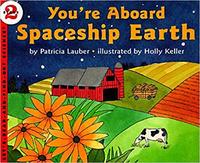
You're Aboard Spaceship Earth
Explains how life is sustained on Earth through the presence of water, food, and oxygen, and how the planet is different from a spacecraft because it can rejuvenate its supply of these critical resources.

How Do Apples Grow?
Describes the life cycle of an apple from its initial appearance as a spring bud to that point in time when it becomes a fully ripe fruit.
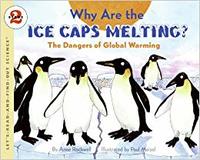
Why Are the Ice Caps Melting?: The Dangers of Global Warming
The earth is getting hotter, and not just in the summer. The climate of your own hometown is changing. But why is this happening, and can we stop it? Read and find out!
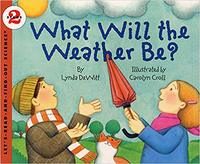
What Will The Weather Be?
Explains the basic characteristics of weather--temperature, humidity, wind speed and direction, air pressure--and how meteorologists gather data for their forecasts.

The Sky Is Full of Stars
Young stargazers learn about different star colors and brightnesses, how to locate major constellations, and how to make mini planetariums by using coffee cans and flashlights. A fine job of encouraging young people to look at stars and constellations. . . . Highly recommended as a science resource book." Science and Children. "A dandy book for [primary grade] readers." AP.
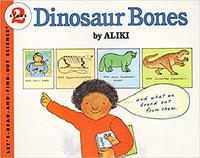
Dinosaur Bones
Discusses how scientists study fossil remains and provide information on how dinosaurs lived millions of years ago.
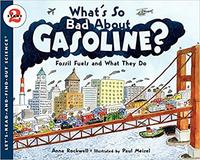
What's So Bad About Gasoline?: Fossil Fuels and What They Do
Look around to see what uses oilcars, airplanes, boats, factories, and countless other machines. The world is dependent on oil as its main source of energy. Although oil is plentiful right now, the supply will eventually run out, and even worse, burning oil is very damaging to the environment. What alternatives can help us use less oil and how can we protect the environment? Read and find out!
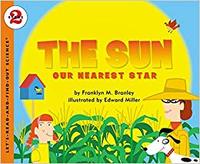
The Sun: Our Nearest Star
Describes the sun and how it provides the light and energy which allow plant and animal life to exist on the earth.
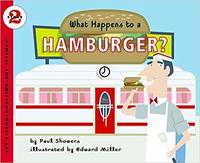
What Happens To A Hamburger?
Explains the processes by which a hamburger and other foods are used to make energy, strong bones, and solid muscles as they pass through the digestive system.

Snakes Are Hunters
Let's-Read-and-Find-Out about SnakesSlithering, scaly, and slysnakes are fascinating reptiles. They are also hunters. Find out how snakes survive in the wild, and how they capture their prey.

Library Book: Earthquakes
This informative book explains how earthquakes happen, describes several major quakes, and discusses how to stay safe in an earthquake.
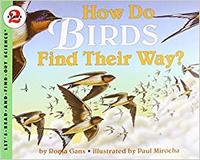
How Do Birds Find Their Way?
Birds don't need maps!Many birds make long journeys twice each year as they migrate between their winter and summer homes. Arctic terns fly more than 10,000 miles from the South Pole to northern Maine. Tiny little hummingbirds fly nonstop over the ocean for 500 miles. How do they know which way to fly? Why don't they get lost? Read and find out the many ideas scientists have come up with to explain this mystery.
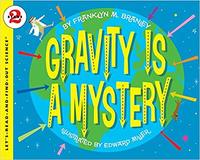
Gravity Is A Mystery
This book defines gravity and discusses how our knowledge of the natural force has broadened and evolved.
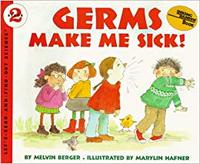
Germs Make Me Sick!
How are you feeling?Most of the time you feel fine, but sometimes you get sick. Sometimes a germ catches up with you.Germs are all around you, but they are too small for you to see. Many germs are harmless, but two kinds, viruses and bacteria, can make you sick. Read and find out about germs, how they can make you sick, and how your body works to fight them off and keep you healthy.

Day Light, Night Light
Complete with full-color illustrations, a collection of fun facts, and interesting hands-on activities, this science book for young readers explores the realm of light, how it travels, the time it takes to travel from the sun to the earth, and more.
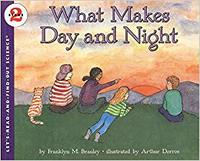
What Makes Day and Night
Accompanied by NASA photographs and Dorros's colorful, lively drawings, the text explains the Earth's rotation in clear and simple terms. An experiment using a lamp as the 'sun' further clarifies the principles introduced.' --BL.
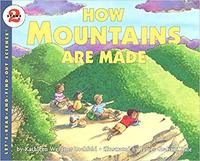
How Mountains Are Made
29,028 feet tall and still growing?!Even though Mount Everest measures 29,028 feet high, it may be growing about two inches a year. A mountain might be thousands of feet high, but it can still grow taller or shorter each year. Mountains are created when the huge plates that make up the earth's outer shell very slowly pull and push against one another. Read and find out about all the different kinds of mountains.
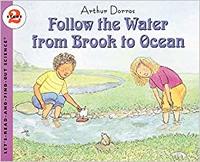
Follow The Water From Brook To Ocean
Explains how water flows from brooks, to streams, to rivers, over waterfalls, through canyons and dams, to eventually reach the ocean.
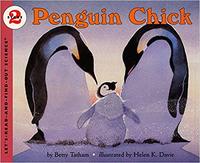
Penguin Chick
An emperor penguin lays an egg on the Antarctic ice. In the bitter cold, miles away from the only source of food, how can the chick survive?
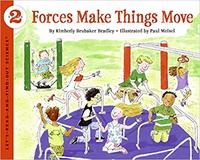
Forces Make Things Move
Simple language and humorous illustrations show how forces make things move, prevent them from starting to move, and stop them from moving.

The Moon Seems to Change
Can you see the moon?Does it look like a big round ball? Or is it just a sliver of light in the sky? The moon seems to change. But it doesn't really. The moon revolves around the Earth. It takes about four weeks to make the journey, and as it travels round we can only see certain parts of it. Try the simple experiment described inside using an orange, a pencil, and a flashlight, and you'll understand why the moon seems to change.
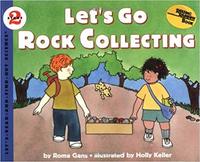
Let's Go Rock Collecting
Describes the formation and characteristics of igneous, metamorphic, and sedimentary rocks and how to recognize and collect them.
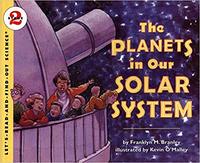
The Planets in Our Solar System
Where is it partly cloudy and 860蝪?Venus. Read about the eight planets in our solar system and Earth's special place in it. This book also includes instructions for making your own solar system mobile, and on the new "Find Out More" page learn how to track the moon and visit the best plant web sites.
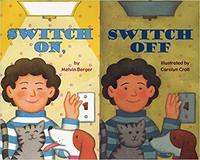
Switch On, Switch Off
Explains the "magic" of how light switches work and the nature of electricity, discussing circuits and generators, light bulbs and plugs, and includes a simple experiment for children
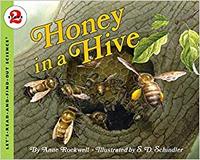
Honey in a Hive
In spring and summer, honeybees gather nectar to make into honey. These fascinating insects live and work together in complicated societies, complete with queen bees and workers. Read and find out about honeybees and their creation -- honey!
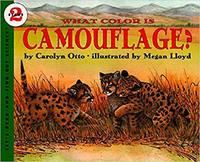
What Color Is Camouflage?
What do a fawn and a hermit crab have in common? They both use camouflage to hide from their enemies. A fawns spots help it blend in with its dappled surroundings, and a hermit crab might be mistaken for an empty shell. This lyrical introduction to camouflage explains how and why a wide variety of animals use it to go undercover. Readers can also hunt for camouflaged animals in every illustration.
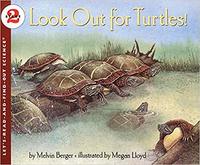
Look Out For Turtles!
Describes the remarkable turtle, which can live almost anywhere, eat almost anything, range in size from tiny to gigantic, and live longer than any other animal.
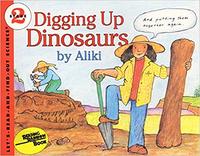
Digging Up Dinosaurs
Briefly introduces various types of dinosaurs whose skeletons and reconstructions are seen in museums and explains how scientists uncover, preserve, and study fossilized dinosaur bones.
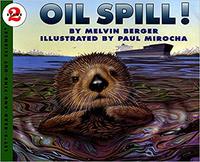
Oil Spill!
Explains why oil spills occur and how they are cleaned up and suggests strategies for preventing them in the future.
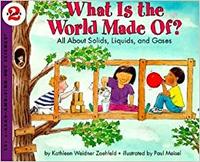
What Is the World Made Of? All About Solids, Liquids, and Gases
Let's-Read-and-Find-Out About Solids, Liquids, and GasesCan you make an ice cube disappear? Put it on a hot sidewalk. It melts into water and then vanishes! The ice cube changes from solid to liquid to gas. . . . Read on to find out more about the three states of matter.
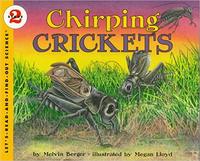
Chirping Crickets
Describes the physical characteristics, behavior, and life cycle of crickets while giving particular emphasis to how they chirp.
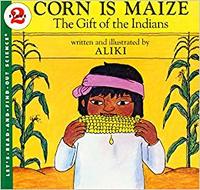
Corn Is Maize
Describes the growth-cycle, cultivation, natural history, and worldwide diffusion and uses of corn in its evolved varieties
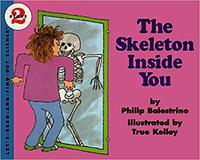
The Skeleton Inside You
What does your skeleton do?Your skeleton helps you leap, somersault, and touch your toeswithout it, you would be as floppy as a beanbag! There are over 200 bones living and growing inside you that make up your skeleton. There are also ligaments and joints that hold your bones together, and cartilage in your bendable parts like your ears and your nose. Learn all about what a skeleton can dobecause this isn't some make-believe Halloween skeleton, this is the real skeleton inside you.
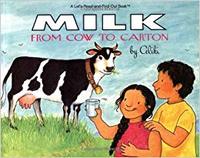
Milk From Cow To Carton
Briefly describes how a cow produces milk, how the milk is processed in a dairy, and how various other dairy products are made from milk.
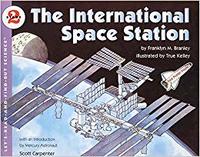
International Space Station
As tall as a 30-story building, orbiting Earth at 17,500 miles an hour, the International Space Station is a triumph of engineering. Includes a page of activities and a double-sided poster showing the complete station.
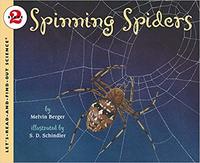
Spinning Spiders
Describes the characteristics of spiders and the methods they use to trap their prey in webs. A Let's-Read-And-Find-Out Science Level 2 title.
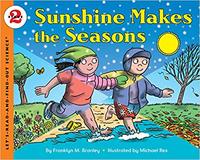
Sunshine Makes the Seasons
The sun shines down on us, giving warmth and light. But did you know that the sun also makes the seasons? As the earth makes one complete rotation around the sun every year, the seasons on the earth change -- from winter to spring to summer to fall and back to winter again. Find out how the light from the sun affects life on the earth for all living things in this look at the only star in our solar system.
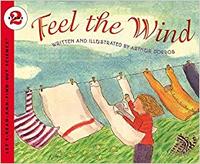
Feel The Wind
Explains how the wind works--whether it is pushing the clouds along, blowing through hair, rustling the curtains, or roaring during a hurricane--and shows how to make a simple weather vane.
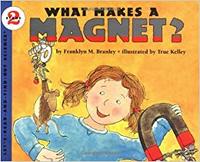
What Makes a Magnet?
Will a magnet pick up a paper clip or a feather? The answer is, just the paper clip. Magnets only pick up things that contain bits of iron. In this new addition to the Let's-Read-and-Find-Out Science series, veteran author Franklyn Branley explains the properties and behavior of magnets. True Kelley's charming illustrations will entertain readers as they discover for themselves what makes a magnet. Hands-on activities include making a magnet and compass.
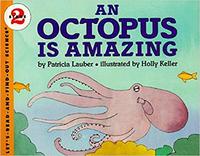
An Octopus Is Amazing
"[Here is] a charming introduction to the truly amazing octopus [from its intelligence to its ability to change colors to the camouflaging black ink it squirts to escape predators]. Lauber's chatty, fact-filled text makes the book a good read-aloud, and Keller's amusing and colorful drawings enhance ita perfect match of text and illustration." SLJ. Children's Books of 1990 (Library of Congress)
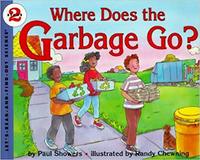
Where Does the Garbage Go?: Revised Edition
Follow that garbage truck!...to the landfill to see how trash keeps piling up...to the incinerator to see how trash can be turned into energy ... to the recycling center to see how a soda bottle can be turned into a flowerpot. Filled with graphs, charts, and diagrams, Where Does the Garbage Go? explains how we deal with the problem of too much trash and provides ideas for easy ways to be a part of the solution.
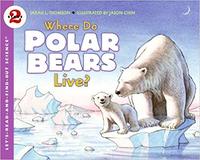
Where Do Polar Bears Live?
Uniquely adapted for life on the ice, polar bears have skin and blubber that cover them like a warm blanket and fur between the pads of their paws to keep them from slipping. But many scientists believe that climate change, which is causing ice to melt in the Arctic, may make it impossible for polar bears to live in the wild by as soon as 2020.
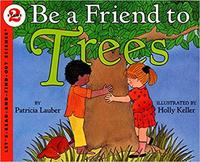
Be A Friend To Trees
Discusses the importance of trees as sources of food, oxygen, and other essential things.
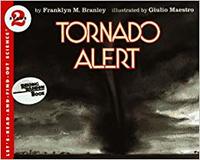
Tornado Alert
Describes the origin and nature of tornadoes and how to stay safe when threatened by one of these dangerous storms.

Fossils Tell of Long Ago
What is a fossil? Sometimes it's the imprint of an ancient leaf in a rock. Or it could be the skeleton of a dinosaur that has turned to stone! With clear prose and lovely, full-color illustrations, award-winning author and illustrator Aliki describes the different ways fossils are formed and what they tell us about life on Earth long ago. This book also includes an activity guide so kids can create their own fossils for someone to find a million years from now.This is a Stage 2 Let's-Read-and-Find-Out, which means the book explores more challenging concepts for children in the primary grades. Let's-Read-And-Find-Out is the winner of the American Association for the Advancement of Science/Subaru Science Books & Films Prize for Outstanding Science Series. Supports the Common Core Learning Standards and Next Generation Science Standards
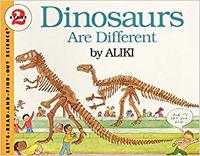
Dinosaurs Are Different
Explains how the various orders and suborders of dinosaurs were similar and different in structure and appearance.

What The Moon Is Like
Provides beginning readers with an easy-to-read, colorfully-illustrated introduction to the moon and its many wonders.
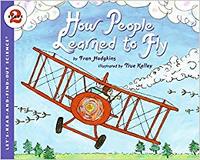
How People Learned To Fly
Presents a short history and outline of the basic principles of flight, along with diagrams of some of the unusual contraptions that people used in their attempts to fly before the Wright brothers finally succeeded in 1903.
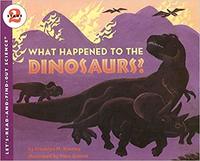
What Happened to the Dinosaurs?
What happened to the dinosaurs?For millions of years these fantastic creatures roamed our planet. Then, suddenly, they all disappeared. Scientists wonder why. What could have caused this huge extinction 65 million years ago?In this enlarged edition, distinguished writer Franklyn M. Branley and award-winning artist Marc Simont provide the perfect introduction to an always fascinating subject - the disappearance of the dinosaurs.Outstanding Science Trade Books for Children 1989 (NSTA/CBC)
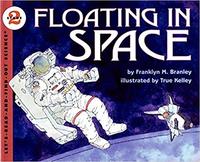
Floating In Space
Examines life aboard a space shuttle, describing how astronauts deal with weightlessness, how they eat and exercise, and some of the work they do.

Mission to Mars
Let's-read-and-find-out about MarsSomeday people from Earth may live on Mars.In this century, we will go to the planet to learn more about it. It will become our outpost in space -- our space colony.
其他您可能會有興趣的書籍
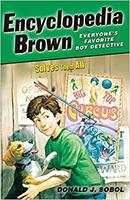
Encyclopedia Brown Solves Them All
Boy detective Encyclopedia Brown, who has never lost a case, helps the Idaville police force.
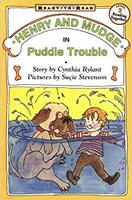
Henry and Mudge in Puddle Trouble
For Henry and his big dog Mudge, spring means admiring the first snow glory, playing in puddles in the rain, and watching the five new kittens next door.
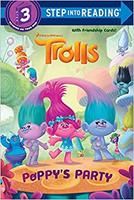
Poppy's Party
TROLLS hits theaters everywhere on November 4, 2016!DreamWorks Animations TROLLS is an irreverent comedy extravaganza with incredible music! From the genius creators of SHREK, TROLLS stars Poppy, the optimistic leader of the Trolls, and her polar opposite, Branch.Together, this unlikely pair of Trolls must embark on an adventure that takes them far beyond the only world theyve ever known.This Step 3 Step into Reading leveled reader has sparkly glitter on the cover and trading cards featuring Poppy, Branch, and the other Trollsits perfect for boys and girls ages 4 to 6!
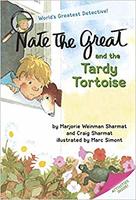
Nate The Great And The Tardy Tortoise
Getting all the facts, asking the right questions, and narrowing down the suspects, Nate the Great and his dog Sludge solve a variety of mysteries.
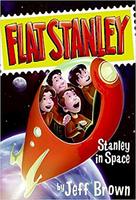
Stanley in Space
When the residents of a far-distant planet send a message to Earth asking for someone to meet with them, the President of the United States asks Stanley Lambchop, an all-American boy, to be his ambassador.
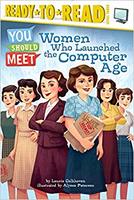
Women Who Launched the Computer Age
This book was chosen by the Childrens Book Council as a best STEM book of 2017! Meet the women who programmed the first all-electronic computer and built the technological language kids today cant live without in this fascinating, nonfiction Level 3 Ready-to-Read, part of a new series of biographies about people you should meet!In 1946, six brilliant young women programmed the first all-electronic, programmable computer, the ENIAC, part of a secret World War II project. They learned to program without any programming languages or tools, and by the time they were finished, the ENIAC could run a complicated calculus equation in seconds. But when the ENIAC was presented to the press and public, the women were never introduced or given credit for their work. Learn all about what they did and how their invention still matters today in this story of six amazing young women everyone should meet! A special section at the back of the book includes extras on subjects like history and math, plus interesting trivia facts about how computers have changed over time. With the You Should Meet series, learning about historical figures has never been so much fun!

Stink and the Ultimate Thumb-Wrestling Smackdown
After second-grader Stink gets an unsatisfactory grade in physical education, his parents tell him he must play a sport and so he masters thumb wrestling, as seen on a sports channel.
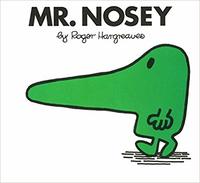
Mr. Nosey
They're back! Rediscover the zaniest characters you've ever met in this best-selling series which has sold millions worldwide. Bright and charming, with easily recognizable characters and a small take-along format, Mr. Men and Little Miss books are easy enough for young readers, witty enough for humor-prone adults, and highly collectible for one and all. Also check your local listings to view the Mr. Men & Little Miss TV show.Back to the Mr. Men & Little Miss microsite.
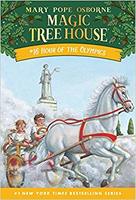
Hour Of The Olympics (MTH #16)
Jack and Annie are off to ancient Greece, where they race against time to witness the very first Olympic Games!

Honey in a Hive
In spring and summer, honeybees gather nectar to make into honey. These fascinating insects live and work together in complicated societies, complete with queen bees and workers. Read and find out about honeybees and their creation -- honey!
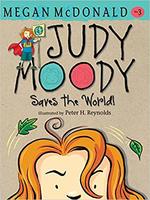
Judy Moody Saves The World!
When Judy Moody gets serious about protecting the environment, her little brother Stink thinks she is overdoing it, but she manages to inspire her third-grade class to undertake an award-winning, environment-saving project.
